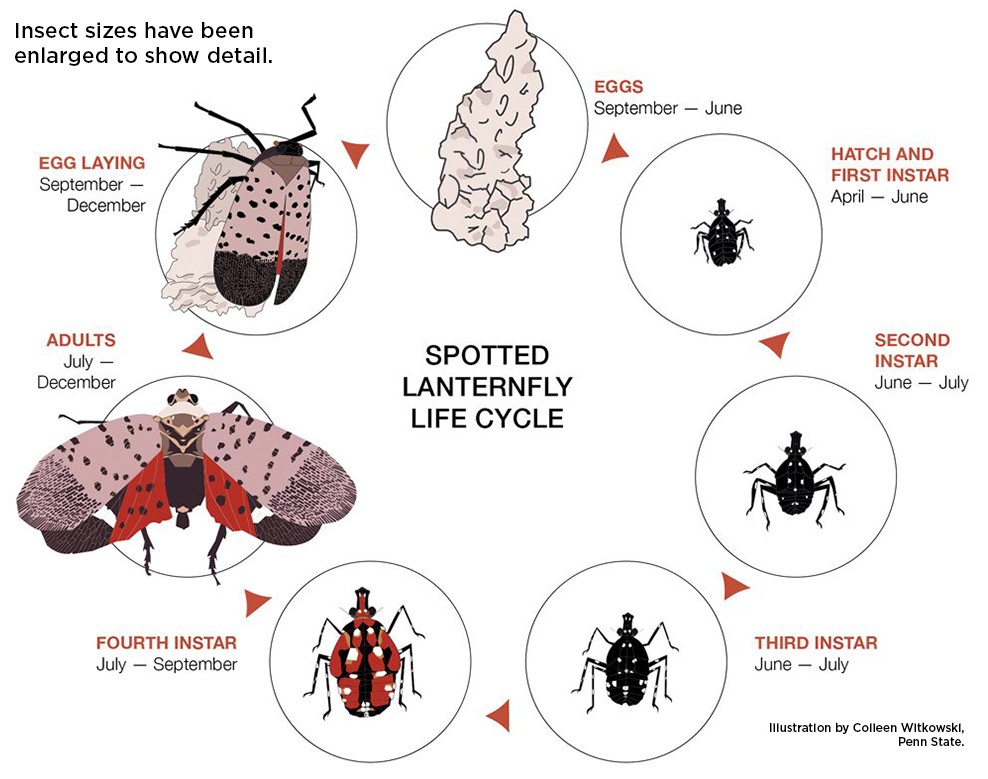What does a spotted lanterfly look like?
Adult spotted lanternflies have a black head and grayish wings adorned with the name-giving black spots, and their bodies seem to glow red. Their wing tips have a pattern that looks as if they are covered with tiny black bricks with grey mortar in between. In flight, the spotted lanternfly displays red hind wings with black spots on the proximal third, a white wedge in the middle of the wing, and a solid black wing tip. The abdomen is yellowish with black and white bands on the top and bottom. The lanternfly is a strong jumper; it hops from location to location more than it flies.
In traditional Chinese medicine, the spotted lanternfly is believed to be poisonous, and is used topically for relief from swelling. It feeds on woody plants and non-woody plants, piercing the phloem tissue of foliage and young stems with its specialized mouthparts, and sucking the sap. The sugary fluid leaks and coats leaves and stems, and this can encourage mold growth. It does not eat the fruit or the leaves. The lanternfly has a wide host range of over 70 plant species, including grape vines, fruit trees, ornamental trees, and woody trees, including apples and several Rosacea with stone fruits.
The life cycle of a spotted lanternfly

Beginning in late April to early May, nymphs hatch from their egg cases. A nymph passes through several immature stages. In the first stage it is wingless and looks black with white spots. It then grows red patches in addition to the white spots. Next, it has red wing pads and a red upper body, before assuming the adult look of black head and grayish wings with black spots. Nymphs cannot fly, so they hop or crawl to search for plants to feed on. Young nymphs appear to have a wider host range early on, which narrows as they grow older. As early as July, adults can be seen. In the fall, adults’ mate and lay eggs from late September through the onset of winter.
In their native Indomalayan habitat they will lay their eggs preferably on tree of heaven (Ailanthus altissima), which has toxic metabolites, and is an introduced invasive tree in North America. This host choice is thought to have evolved as mechanism of protection from natural enemies. Spotted lanternflies will lay eggs upon any smooth trunked tree, stone or vertical smooth surface, including man made items like vehicles, campers, yard furniture, farm equipment or other items stored outside. The egg masses contain 30–50 eggs, covered in a yellowish-brown waxy deposit, often referred to as an egg case. The lanternfly’s life expectancy is one year.